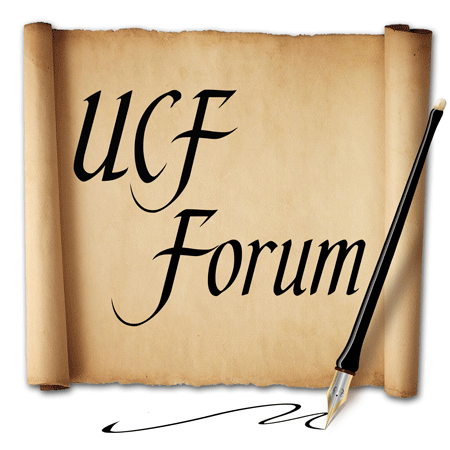As we celebrate the 50th anniversary of UCF this year, we are reminded that the core benefit of an upper-level education is the opportunity to pursue and obtain insight and knowledge over blindness and ignorance.
We live in a time in which faith in religion is believed by many to provide the best solutions to our most profound and unknowable questions. To others, the discipline of mathematics and the scientific method of inquiry are considered to be the best rational means for navigating human dilemmas.
While these age-old debates between the sacred and secular continue, we must be cautious to not overlook the subtle changes that have taken place in the means and manners for pursuing truth that are offered to us outside the academic world.
More and more, we are being inundated in media and politics with pseudoscience presented as real science in the form of reality shows on many 24-hour cable programing cycles. The airwaves are filled with quirky notions of obscure Egyptology, extraterrestrial ancestors, and human-animal creatures in the woods. We consume books listed in the top 10 most prominent non-fiction categories on The New York Times Best Seller lists – that are actually fiction.
We populate theaters that offer us outlandish and silly, but frighteningly popular “reality-based” movies of modern-day vampires, werewolves and ghosts, which appear to be replacing a formerly legitimate genre – science fiction – the staple primer for future scientists and innovative thinkers.
Worse yet are the popular plethora of television “documentaries” about paranormal activity equipped with high-tech sensors prominently depicted as measures of reliable truth.
In the fine arts, particularly the traditional visual arts, a similar phenomenon has occurred, as fashionable art is becoming more popular than the more thought-provoking art. But because the fine arts are sometimes deemed less relevant to the lives of many in our contemporary culture, I think the issue unfortunately goes less noticed and may be considered unequal to the issues confronting science, especially as pseudoscience attempts to usurp and misconstrue the language and methodologies of real science. To those who are uninformed and not exposed to significant experiences or opportunities for education in the arts, the visual arts are often relegated to the same realms as pseudoscience.
Leonardo da Vinci has always been celebrated as both an artist and a scientist for his beautiful and meticulous renderings of the observable world while also offering us his visions of futuristic flying machines. M.C. Escher, a recently popular contemporary artist, created complex interlocking geometric forms that can be perceived as either birds or fish or both simultaneously, depending on how you look at them. Da Vinci and Escher are well known examples of artists/scientists.
Long ago, Paul Cézanne, the indisputable “father of modern art,” was considered radical for simply eliminating directional light and shadow in his paintings. By doing this, his forms began to exist in a “universal” light rather than a specific moment in time. Light, therefore, became integral to color – a static and timeless light.
He also challenged ideas about space by suggesting that space is not empty. By interlocking and converging broad planes of space with broad planes of mass in his landscapes, Cézanne made paintings in which space is affected by objects, and objects are affected by space.
Cézanne’s paintings demonstrated new conceptions of space, time and light that were being elaborated at the time by the physicists who were challenging assumptions in the late 19th and early 20th centuries.
To some of us working as research educators with students to reconnect the arts and sciences, this comparison between modern art and modern physics is fundamental.
UCF physics major Christopher Frye and art student Mary Joy Torrecampo are both interested in relationships between science and art, and are currently collaborating on an undergraduate interdisciplinary research project.
Based on Frye’s explanations to Torrecampo about the geometry of our universe, her challenge is to recreate those explanations in a painting.
Frye said: “Did you ever play an arcade game as a kid, where if you leave the right side of the screen then you return on the left? In such a universe, space is wrapped up like a cylinder or a torus [a doughnut-shaped surface] so that if you keep going in one direction, you will always return to where you began. Physicists believe that our universe might be wrapped up like a cylinder or a torus, and the theory of relativity tells us what life should be like in such a universe.”
His explanation goes on, and it will be a challenge for Torrecampo to find a way to depict his ideas in a creative way that is relevant to both her interests and skills as an artist.
In the future, Frye will continue to pursue advanced physics, but in a world that values pop-science over real science his field may become more and more obscure. I hope Torrecampo’s imagery, however, might compel people to become excited about Frye’s complex theoretical ideas.
On the other hand, without Frye’s subject matter, Torrecampo’s abstract paintings may seem incomprehensible and irrelevant to a public that often cares little about the seemingly radical imagery of contemporary art.
I hope that more students like them will be encouraged to collaborate for the sake of achieving and obtaining a more expansive, interdisciplinary opportunity for seeking truth and knowledge.
